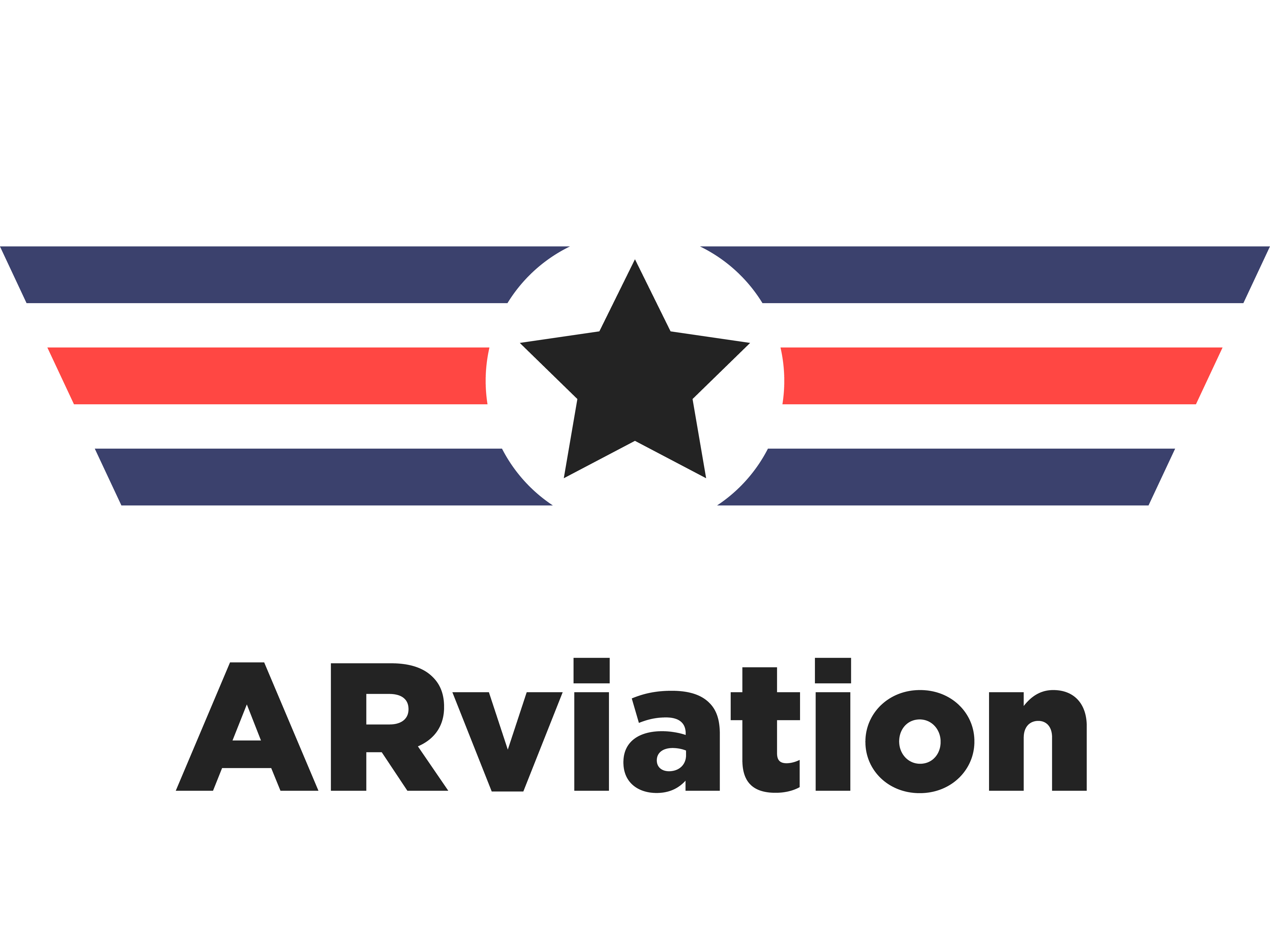This second week has been centered around establishing clear project and experience goals, as well as continuing to develop materials concerning the team’s identity. These effort are closely related to quarter’s presentations, which start at the beginning of next week.
Design Production
The team logo was completed by Ivy, with feedback and suggestions from faculty members. Her final design maintains several elements of her original ideas, but did evolve in considerable ways.
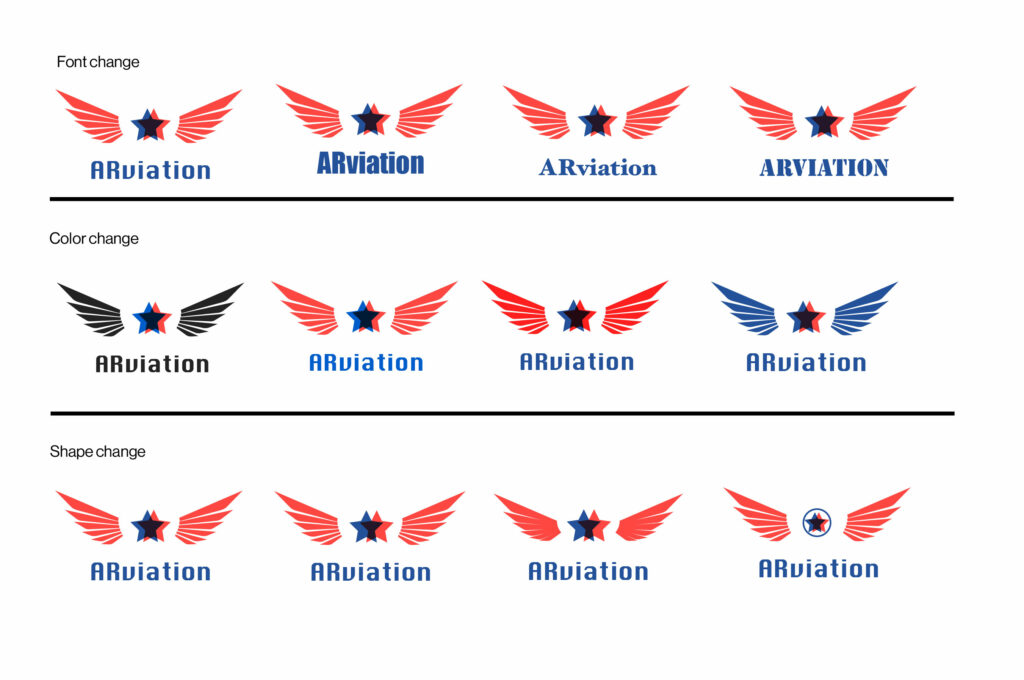
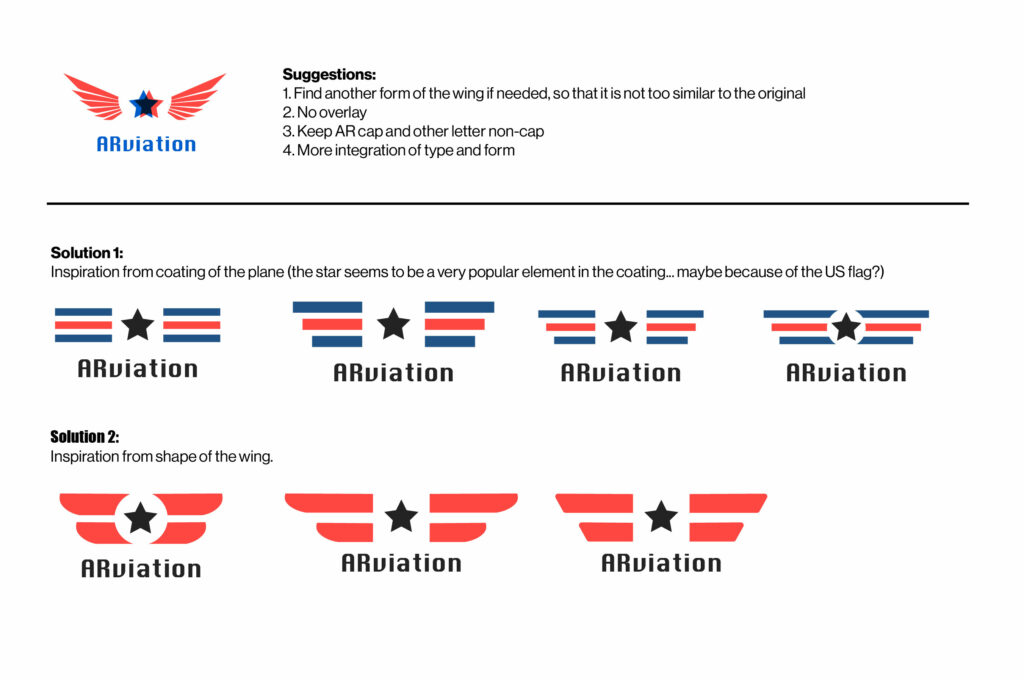
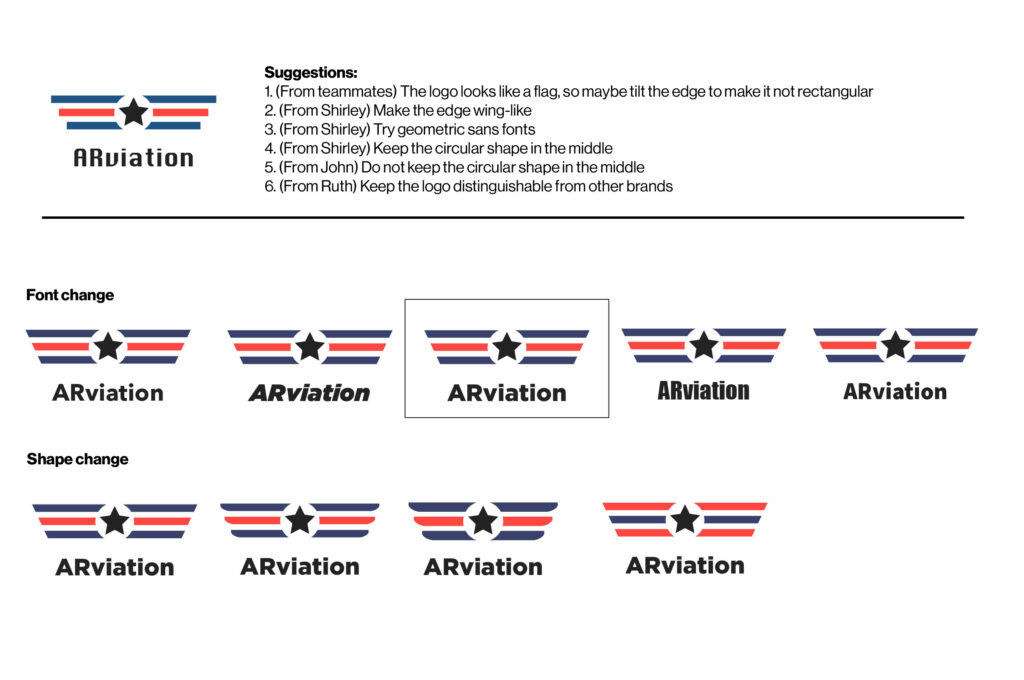
Additionally, Ivy sketched some ideas for the team poster, inspired by references of vintage posters from airlines, air forces, etc.
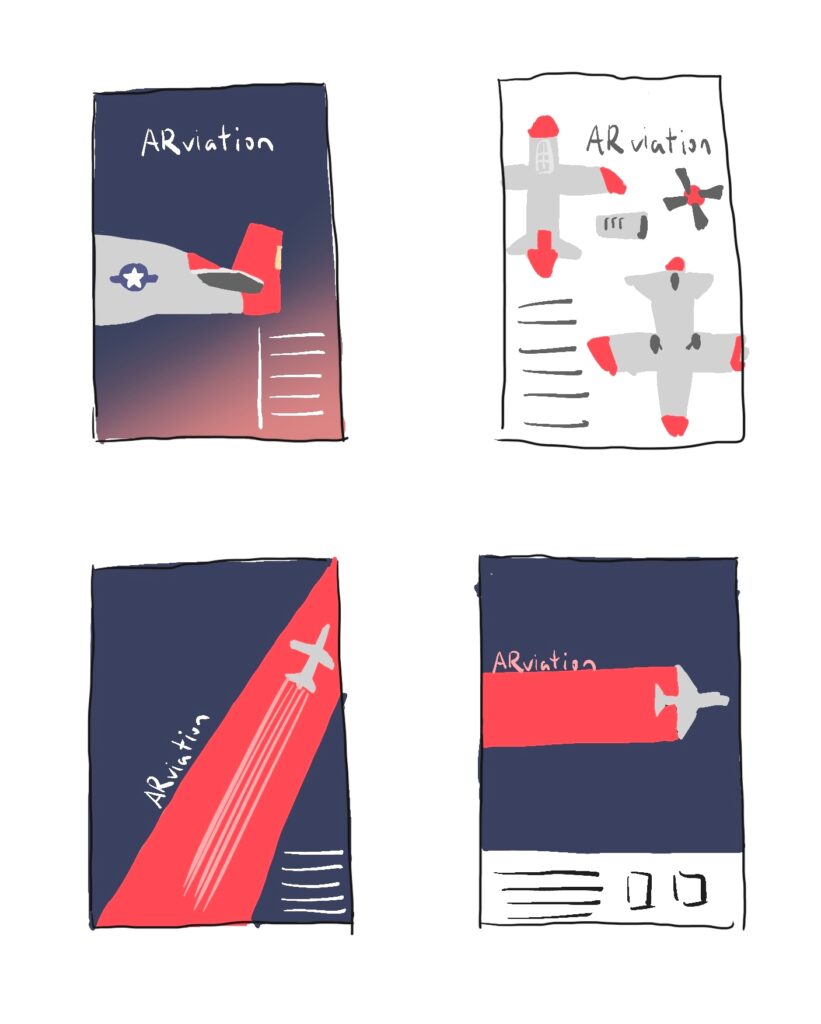
Also, the team opted to show an illustration in place of the team photo, and with the help of a P-51 Mustang’s photograph and the Avataaars Generator website, María created the team image that is displayed in our Team page.
Takeaways From Meetings
Our weekly meeting with our instructors was incredibly eye-opening; we showed them our first brainstorming file and received constructive feedback that made us realize our goals were too many and too different, and our ideas were too focused on the technology for the experience but not so much on the content. They gave us more detailed suggestions, of course, but overall, they’re opinions helped us understand the importance of settling for clearer goals and experience ideas at this stage.
Their comments were echoed during a Playtesting Workshop that was carried out on Wednesday, facilitated by professors Michael Christel and John Dessler. We were asked to create a composition box with our brainstorming work at the time, and our peers were prompted to leave comments about what excited them and what confused them about our ideas, as well as other projects or experiences our ideas reminded them of.

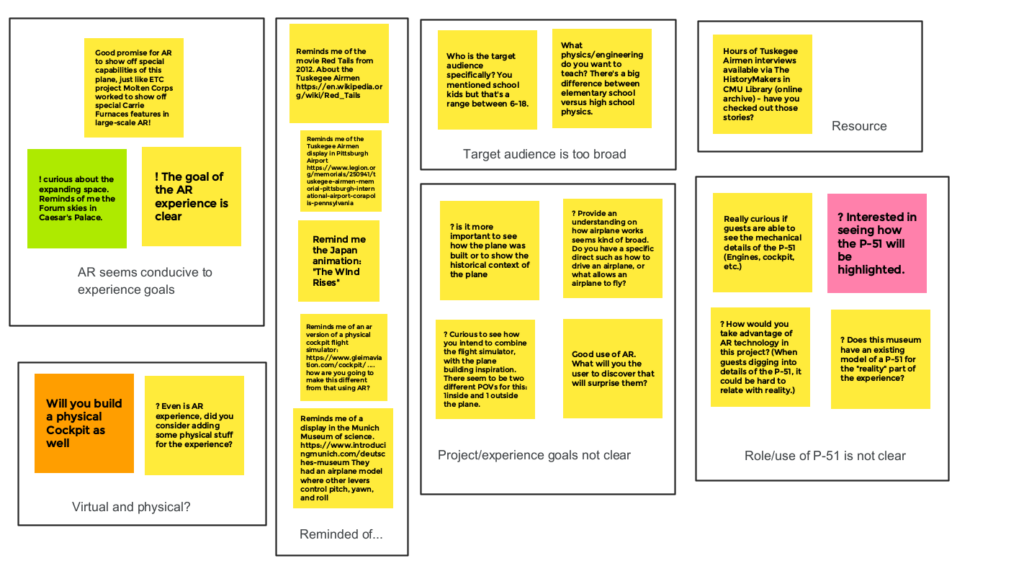
Therefore, all these reactions to our initial work led to a second brainstorming session in which our ideas were much more focused and narrowed down to specific points. This time around, we started to consider alternatives in which the P-51 Mustang was no longer the highlight of the experience, neither the Tuskegee Airmen. This arose from a question that was presented to us – is our goal to teach students about the science and engineering behind aviation? If so, wouldn’t it make more sense to create an experience about the present and future, as opposed to the past?
We presented our new goals, ideas, and questions to our clients, who were pleased with being presented specific options to discuss, hearing about alternatives to their original idea, and seeing how our team design identity was taking shape (in other words, they really liked the logo!). They were very open, right away, to the idea of using newer aircraft models than the P-51 Mustang; the purpose of the Hosanna House exhibition is to inspire students to look at aviation as a possible future for them, so this perfectly aligns with that goal.
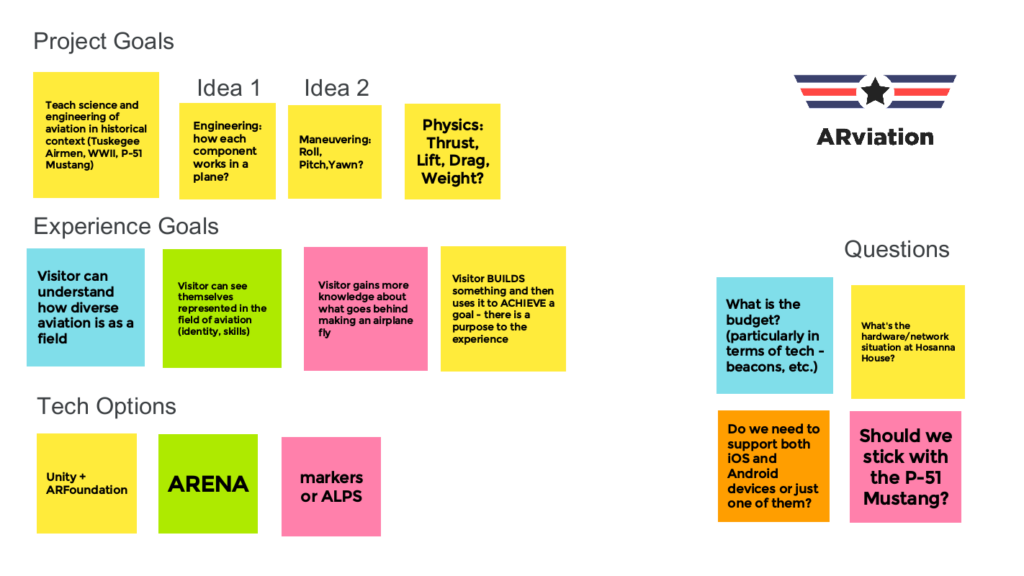
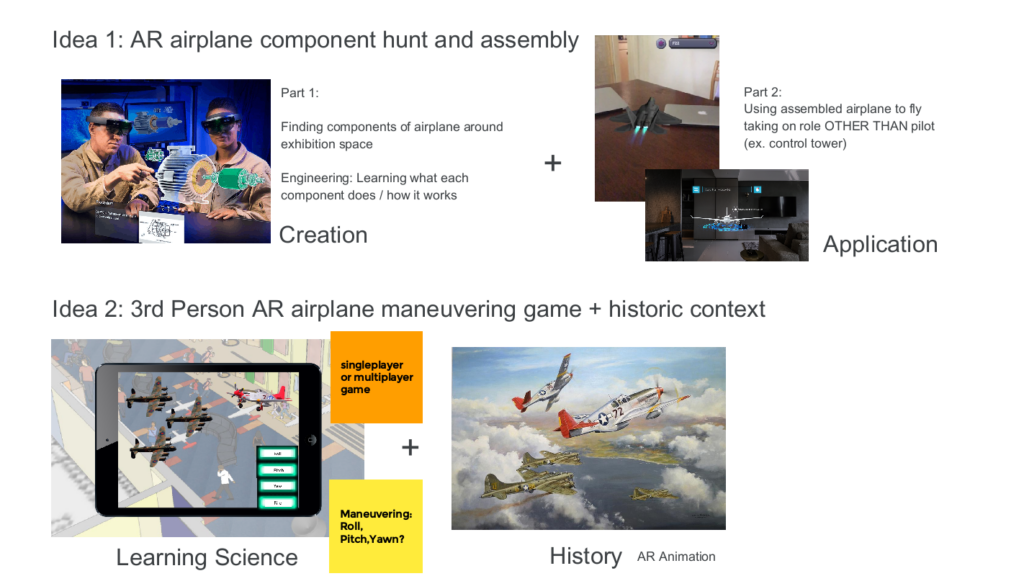
As a team, we had also been considering what makes most sense for this project in terms of pedagogy, and our project ideas reflect this. In particular, we wanted to take a constructivist and/or constructionist approach, in which the students learn by doing and building, and use their creation to gain more knowledge in a collaborative setting. To this end, we presented an idea in which students find AR airplane components around the exhibition space, learn how this components work and help an airplane fly, and then use them to assemble their own airplanes. Then can then use their airplane to fly, maneuver, etc. Our clients like this idea, and shared their feedback and suggestions so that we can start working with this concept in a way that matches their vision.
Finally, we had a meeting with John Balash, who advised us in terms of what AR technology we can use for the project, based on his own experience with MuseumLab and other educational projects. He told us about ARENA, an AR platform developed at CMU, and ALPS beacons for indoor-positioning, also by a CMU team. We discussed this with our clients, which posed a major task for us – we need to create a hardware list and budget soon!
